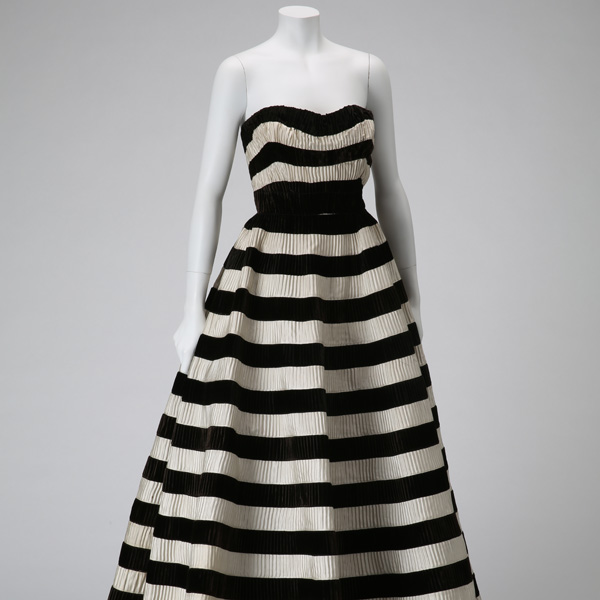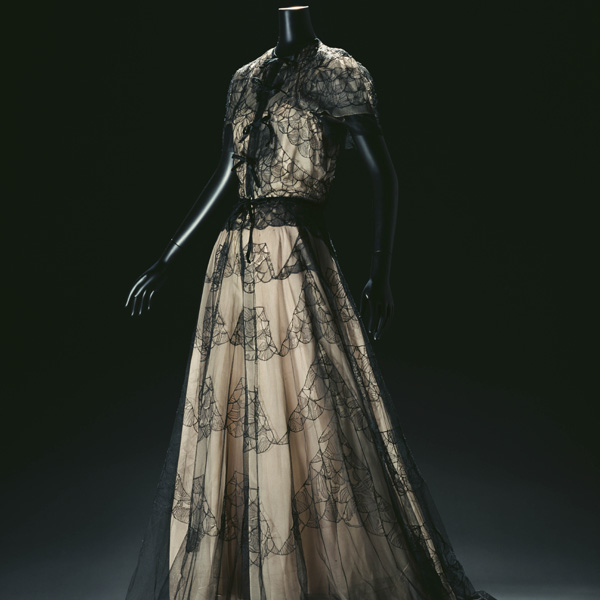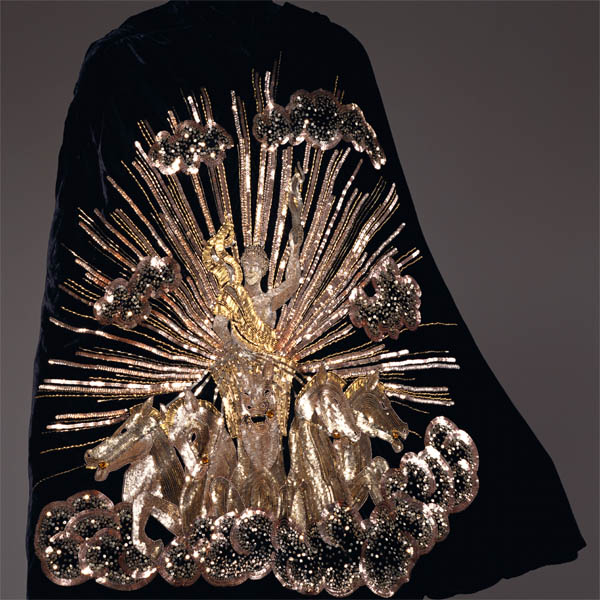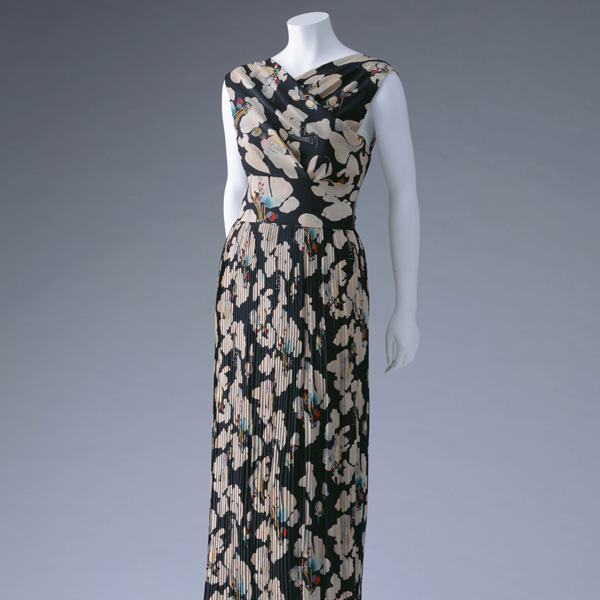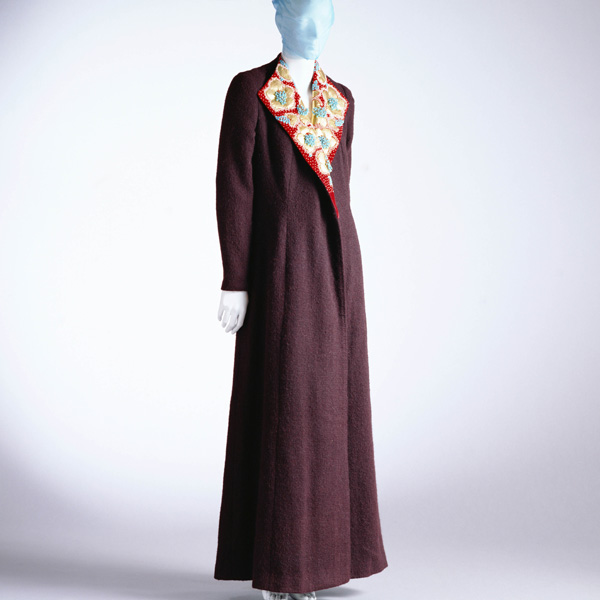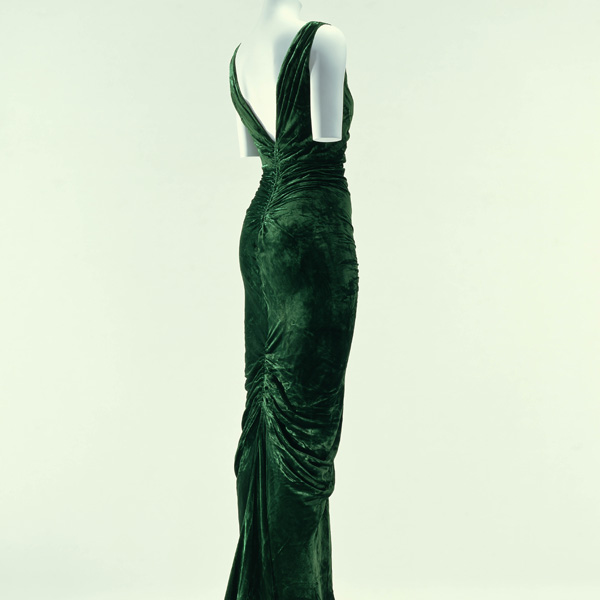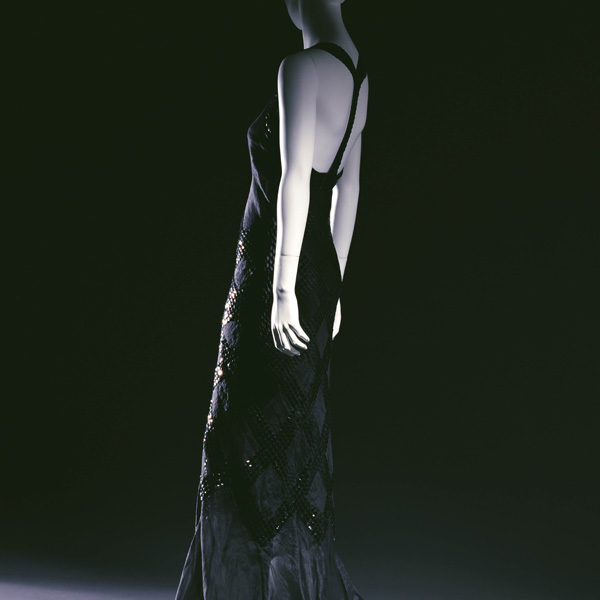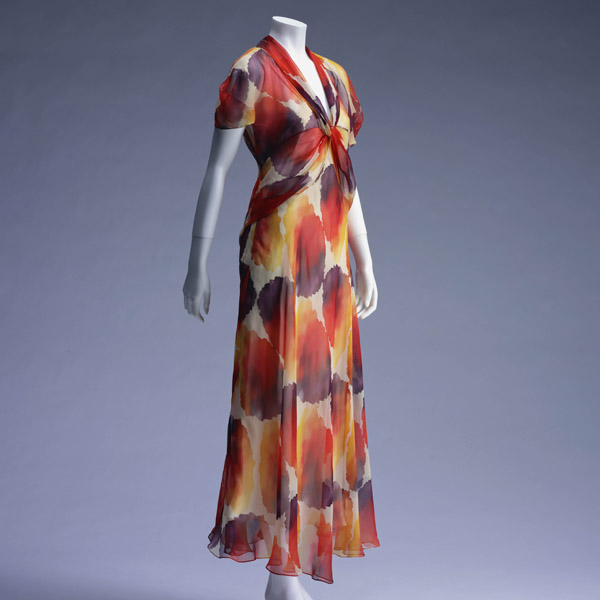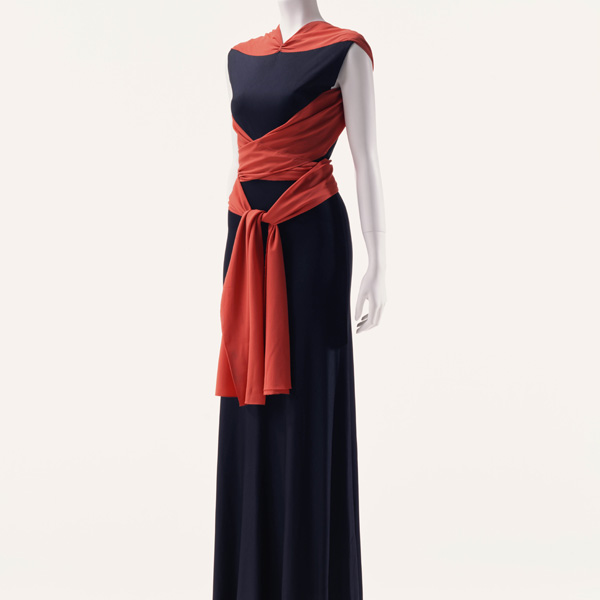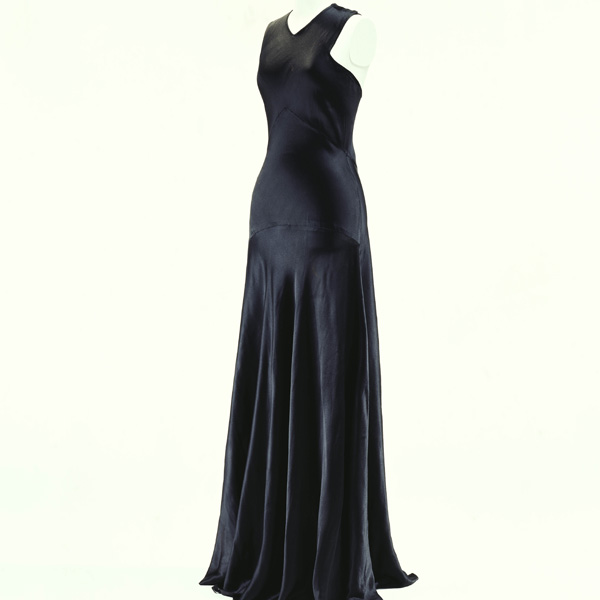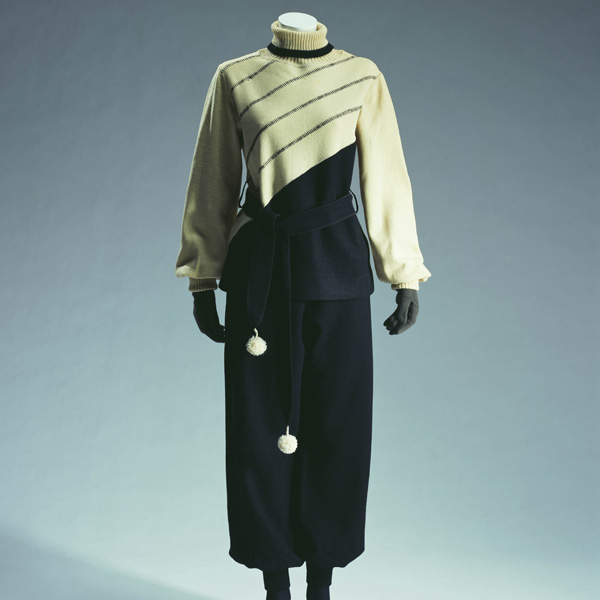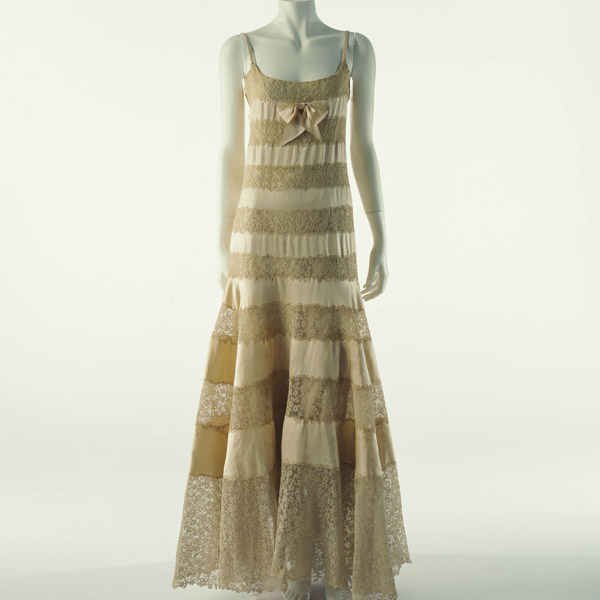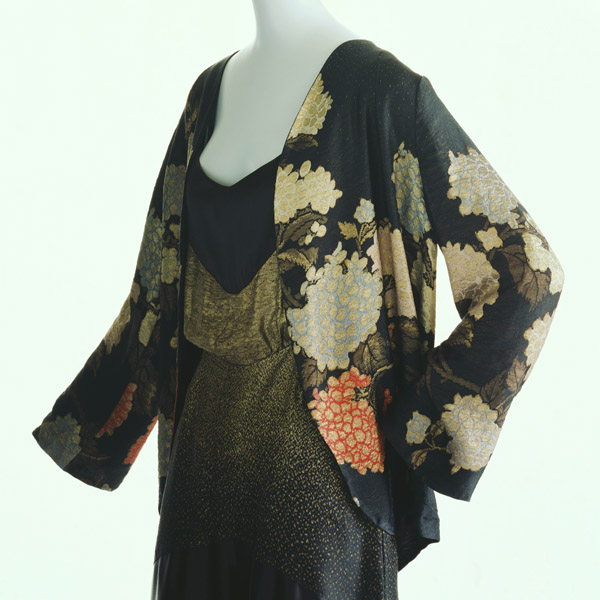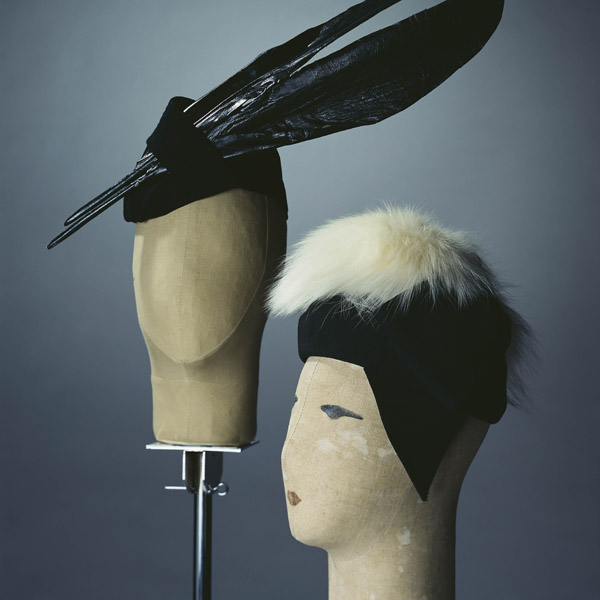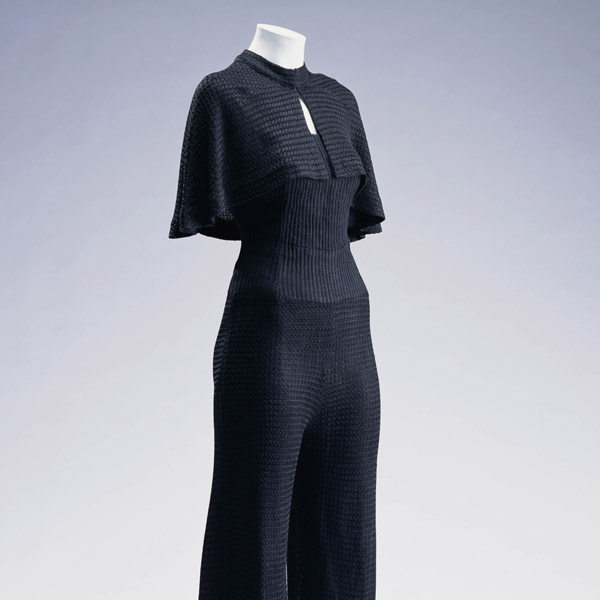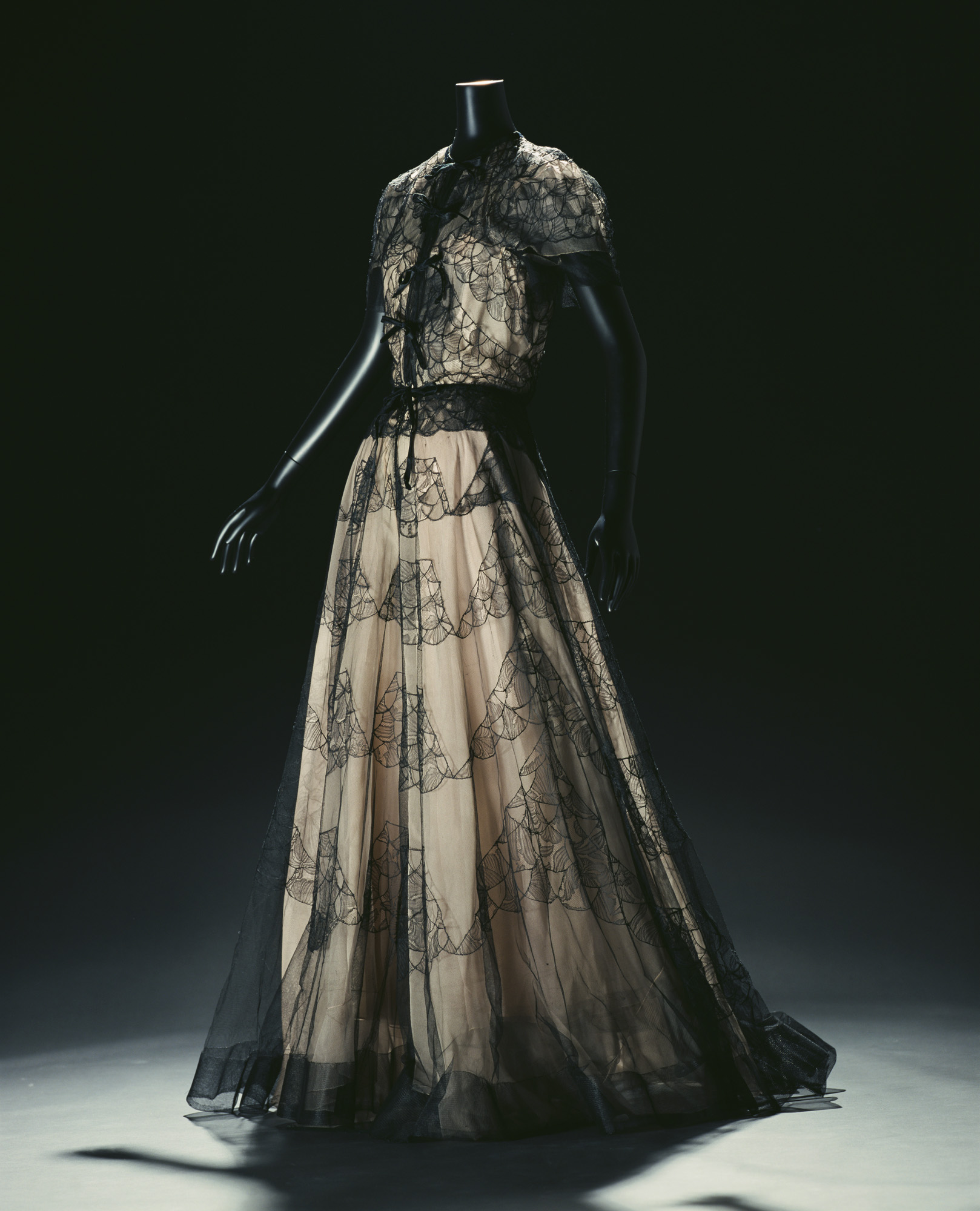
© The Kyoto Costume Institute, photo by Taishi Hirokawa
You can enlarge by putting the mouse cursor on the image.
Hostess Gown
1939 Summer
- Designer
- Madeleine Vionnet
- Brand
- Madeleine Vionnet
- Label
- MADELEINE VIONNET DÉPOSÉ (fingerprint)
- Material
- Pink silk chiffon culotte dress; overdress of black net with lace appliqué; velvet bow; undergarment of crêpe de Chine.
- Inventory Number(s)
- AC6817 90-24-5AB
An elegant example of hostess gown. The loose skirt is, in fact, culottes. The fabric, cut into a three-quarter circle, is brought to the front on both sides and wrapped around, so that the back of the garment effectively looks like a skirt, while the front is in the shape of pants. The geometric pattern of the elegant, black lace overdress stands out over the culottes. The use of gradation in the fabric is a feature of Vionnet’s designs, with the pattern becoming larger as the skirt spreads out, while the patterns also cleverly conceal any seams or facing seams.
During the 1920s, pajamas became popular as sleepwear even amongst women, and by the end of the decade, pajamas were attracting attention in the form of beachwear to be worn at resorts. The look eventually became popular during the 1930s as dressing gown, such as the hostess gown, and arguably was the forerunner of women’s pant fashion. During this decade, outerwear began to make the transition towards the simplicity of contemporary clothing. The glamour and opulence of loungewear and undergarments, however, was in stark contrast to this look.
 Digital Archives
Digital Archives